Tetsu
Dependiendo del nivel de peligro, un tetsu puede llamar a una reacción en cadena, resultante en una cantidad enorme de tetsus movilizandose. Estas criaturas también mantienen cantidades de conecciones y pactos con otras especies, volviendolos casi invulnerables. Son criaturas extremadamente vengativas, y comparten un odio innato por los societarios, al punto de matarlos a primera vista. Si un societario amenaza o trata de dañar a alguno, los tetsus se organizan para atacar en manada la zona, y pueden llegar a matar cientos de societarios y destruir pueblos. Son extremadamente peligrosos, y no se deben tomar a la ligera.
Anatomía
Los tetsu son cuadrupedos terrestres. Tienen garras parcialmente retractiles en las patas y cuernos curvados en la cabeza. Su cuerpo está cubierto de pelo largo marrón en todo el cuerpo salvo las extremidades y la cara, en las que tienen pelo corto y rojizo oscuro. En la parte frontal de sus extremidades, tienen rayas horizontales negras. Los jovenes nacen con hocico alargado y los ojos parcialmente a los costados de la cabeza. A medida que crecen su hocico se achata y alarga hacia abajo. Los adultos finalmente tienen caras planas, con la nariz achatada, los ojos apuntando totalmente hacia adelante y boca que no se proyecta. Crecen muy lento, y pueden tomar varias decenas de años en llegar a su aspecto final.Habitat
Los tetsu viven en los terrenos montañosos. Son territoriales, más que nada los de mayor edad, pero toleran más a otros tetsus que a potenciales competidores, especialmente societarios, a los cuales darán caza si los encuentran en su territorio. Suelen dormir y anidar en cuevas amplias. Los tetsu más viejos pueden vivir de dos a tres centurias.Historia y Pactos
Los tetsus no tienen historia escrita. Sin embargo, han dejado una huella sangrienta en toda la historia de los societarios, siendo la más reciente la Guerra de los Cuatro Picos. Esta una de las especies con los pactos más fuertes con otras. Su ideal último suele ser la invencibilidad, por lo que forman pactos fuertes con aquellas especies que pueden ofrecerles una ventaja estratégica que ellos no posean (por ejemplo, especies marinas o voladoras) a cambio de la posibilidad de llamarlos en caso de necesidad. Los societarios estiman que los tetsus de algunas zonas tienen pactos con especies varias para evitar que estas pacten con los societarios, o para asegurarse que traicionen a estos últimos en caso de un enfrentamiento.Upon seeing the cities built by the societarians, an outsider visiting the Haan Archipelago for the first time would assume it to be dominated by them.
But after leaving the bustling coasts and getting closer to the mountains, they would find that settlements stop abruptly as the terrain becomes uneven and miner towns are relegated to the few remote places where the ruler of the mountains doesn't go. The tetsus, a heavy, violent beast, roam all of the mountain chains in the archipelago, and while societarians rule the flatter terrains with their technology and organizations, tetsus do so on the steep ones with cunning pacts and fearless brutality.
Biology
Anatomy
Tetsus are big quadruped mammals, reaching 1.75m at the shoulders for old adults, though they grow slowly through their 300 years long lifespan, so most of them are quite smaller. They have a thick coat of long brown hair through all of their body except their legs and face, where it is short and dark burgundy with black stripes at the front of the legs. They have two curved horns, yellow eyes and retractile claws. When they are born, their heads have long snouts and eyes at the side of the face. However, as they grow into adulthood the snout gets progressively shorter as the face grows downwards and their eyes travel forwards until they are left with a flat face, a nose that points downwards to a non-protruding jaw, and eyes facing to the front.This development takes several decades to complete, and tetsus up to 40 years old may still show some juvenile facial characteristics.
Habitat
Most of the population lives deep into the mountains, though they usually move closer to rivers and to lower terrain, richer in wildlife, as they get stronger and able to defend a bigger area. Those older tetsus can have closely guarded territories spanning dozens of kilometres wide. Other tetsus may be tolerated in these territories, as they are more aggressive towards competition from other species, especially societarians.Behaviour and reproduction
Solitary in nature, tetsus join to mate, help each other on-call, and organize retaliations.They can have several dens, usually natural caves or crevices they fill with a thick bed of dry plant material. It's common for them to have a den to sleep and a different one to take their prey to eat. They hunt mostly middle sized and big creatures, such as doisus, gnaws and alzufhars. The latter are hunted on sight, since tetsus feel a need to punish them for associating so closely to societarians.
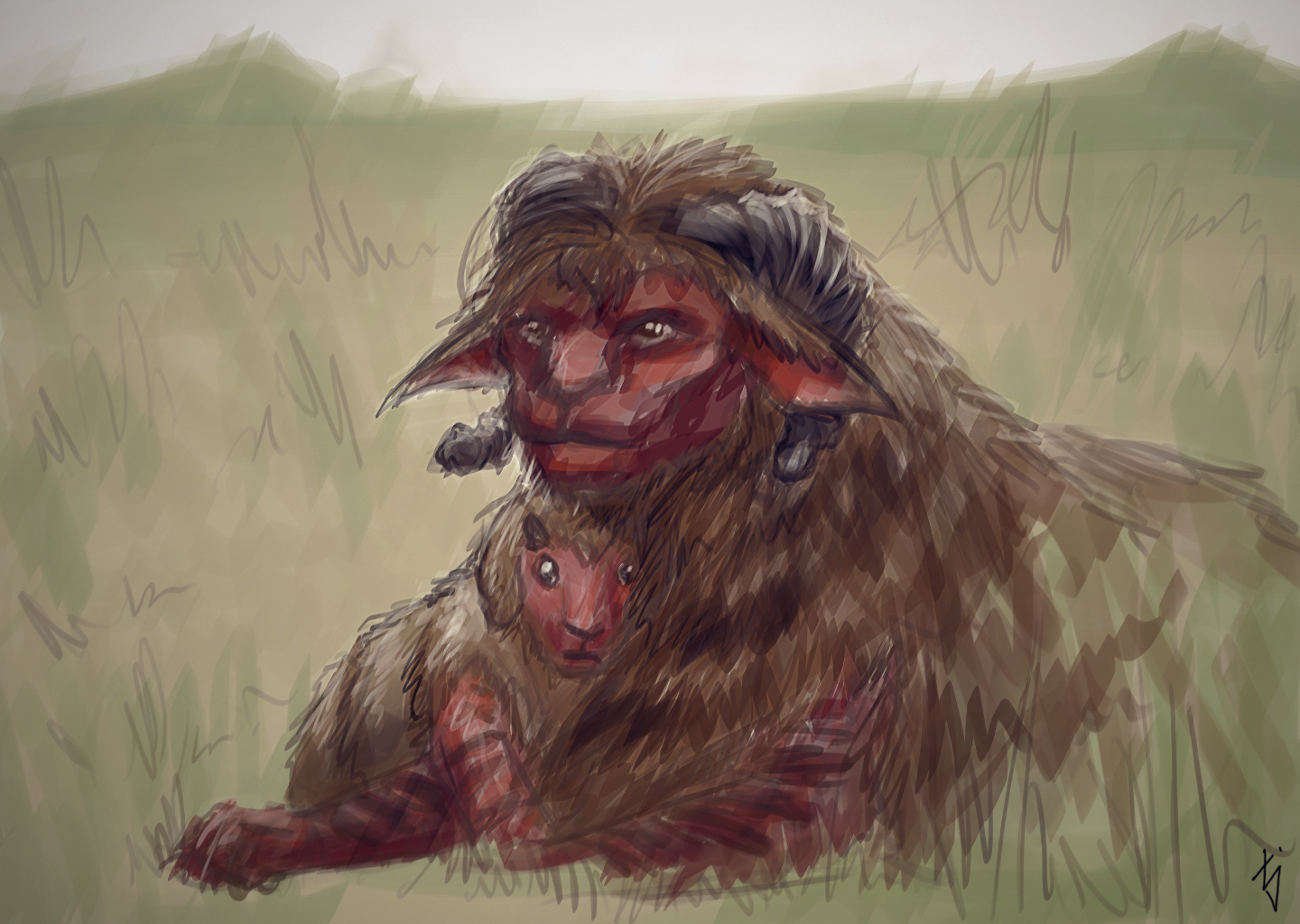
They transition to independence slowly, spending several years helping their mums hunt and care for younger siblings.
As female tetsus are usually stronger and slightly bigger than males, and mothers count with the aid of their older children, they are more respected by others.
A hive mind of domination
Tetsus seem to share a sort of hive mind to support their "status" as a dominant species. They maintain this status by force, and will retaliate en masse if they perceive societarians or other species to be competing with them. The hive mind hypothesis comes from the unlikely behavioural traits that these creatures have, all lined up to the same goal: The supremacy of the Tetsu species above all others.A Call for Aid
When a tetsu is in danger or feels that they need an extra hand at dealing with a problem, they emit a special call.Despite being solitary creatures, any tetsus that hear it will feel compelled to assist the one in need, usually by helping kill an adversary.
A Penchant for Pacts
Tetsus are intelligent and skilled in diplomacy, keeping intricate webs of pacts with other species in their area. They usually keep their pacts discreet and limit them to have the other party also assist to their calls for aid. In some cases, it is not quite clear what are they providing to the other party.Tetsus and Societarians
The hatred between tetsus and societarians spans ages and has left marks on most cultures. As the tetsus' natural habitat is a difficult terrain for societarians to fight or delve in, they tend to try to leave tetsus alone and avoid them instead of fighting back.This is part of the reason why, before the High Rust, people considered living in high places and near mountains as a symbol of status, as this required the means to prevent oneself from being attacked, as well as identifying the person with the powerful beasts.
Dinner the Tetsu
During the year 1 E.Ru, the merchant Naelin managed what was thought to be an impossible task: He adopted a tetsu cub that he found hurt and abandoned and brought it back to his homeland in Merthiorn Island as the cub not only tolerated him, but showed a friendly attitude, behaving almost like a loyal, intelligent guard lyraik. The cub was named Dinner, as the meal his discovery interrupted. After the initial panic, the people of Merthiorn, whom had lost their royal family and capital mere months before during The High Rust, started seeking the protection of Dinner and his tamer, and this escalated until Naelin was crowned as the King of Thaur, the new nation built on top of the fallen one that now has Dinner as their symbol of power.1.75m to the shoulders (old adults)

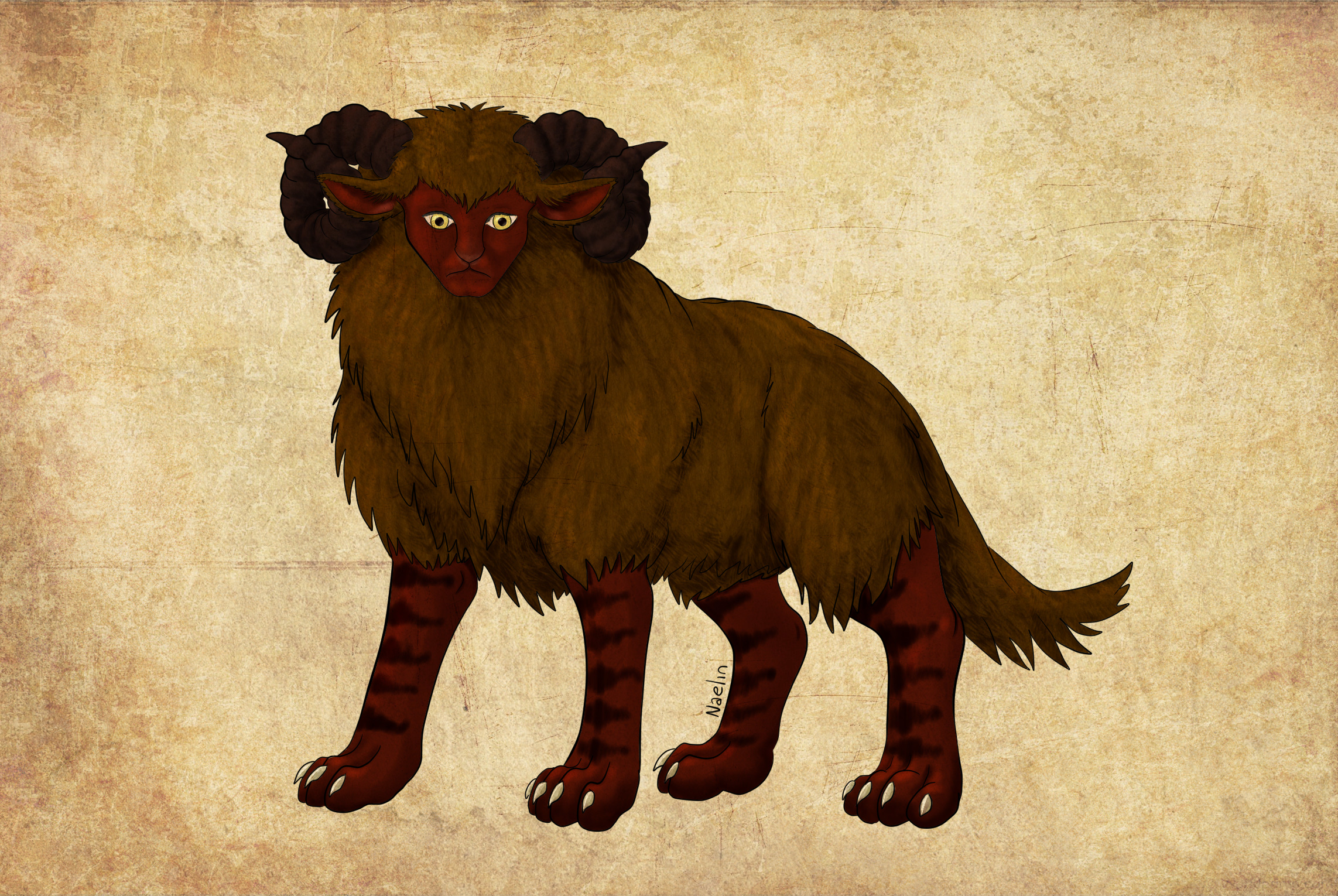

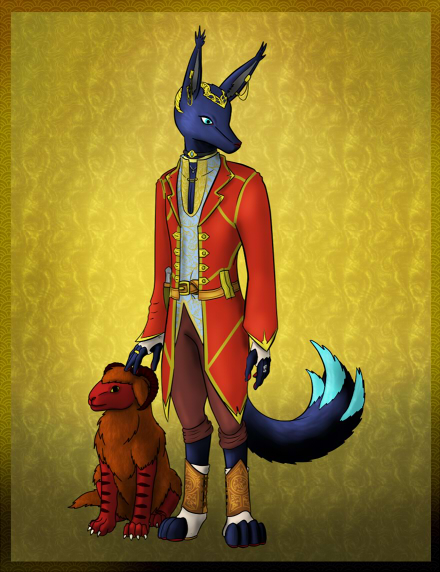

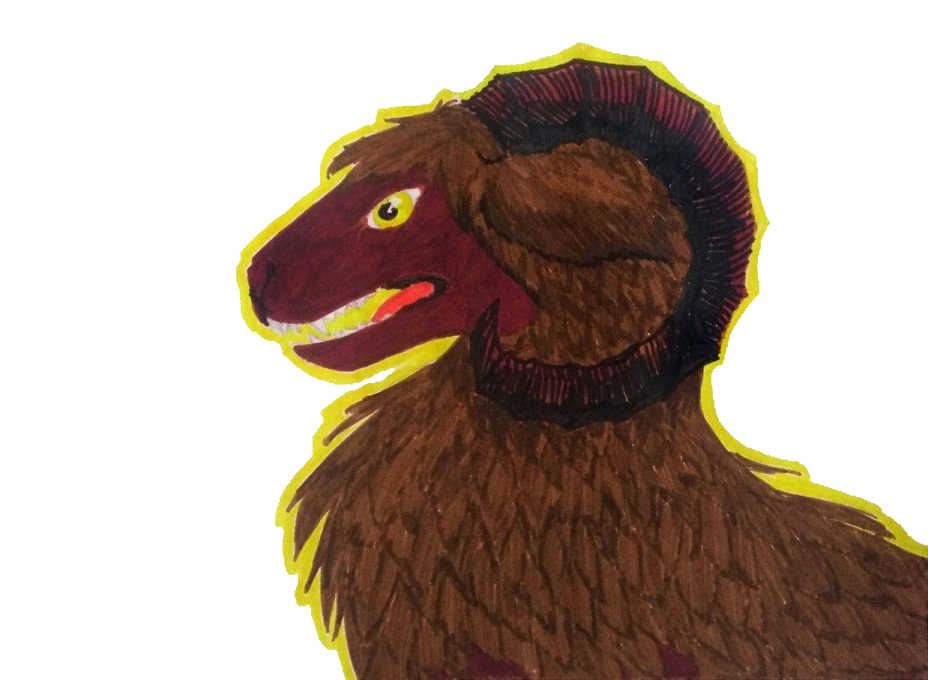
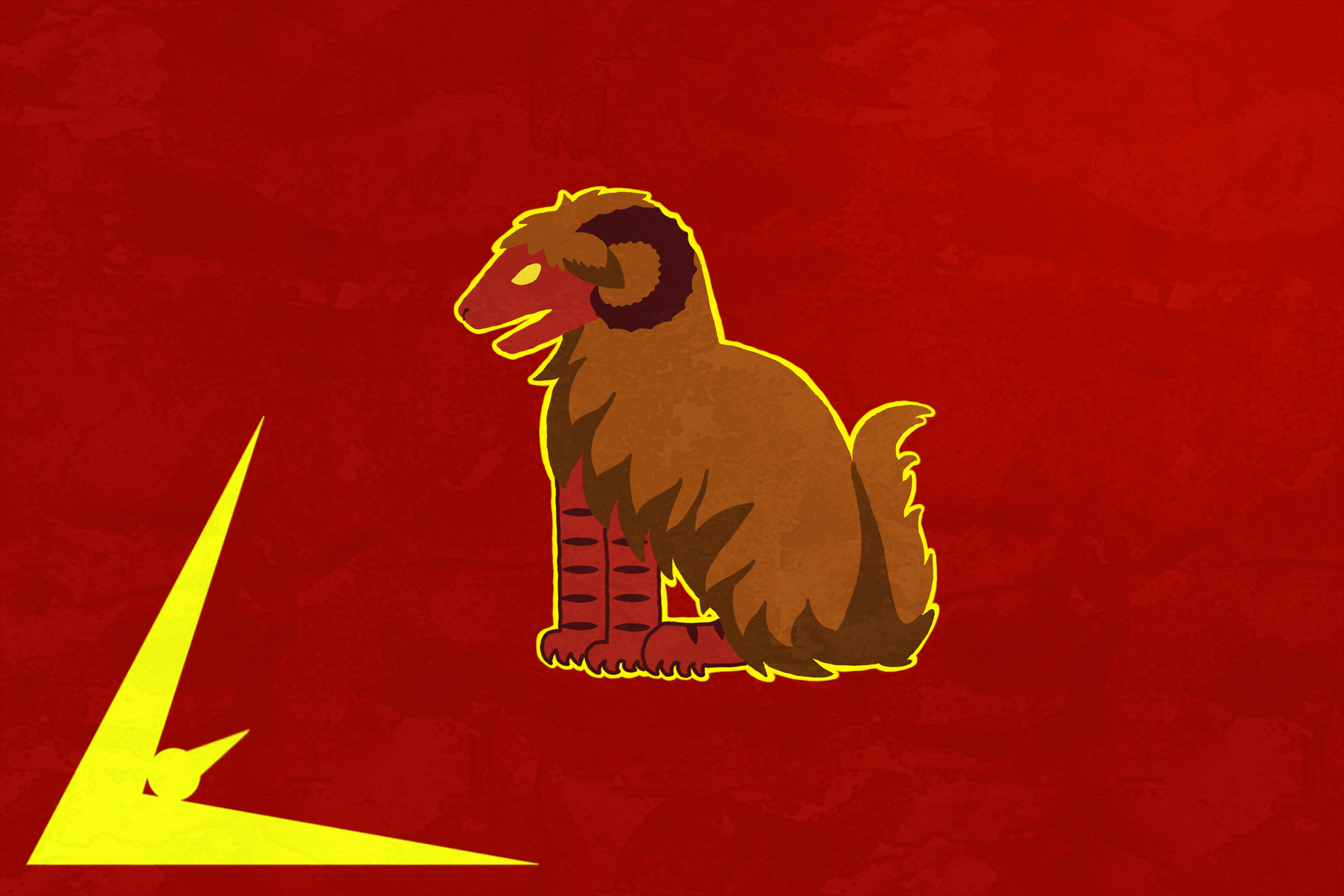


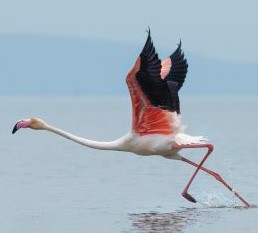
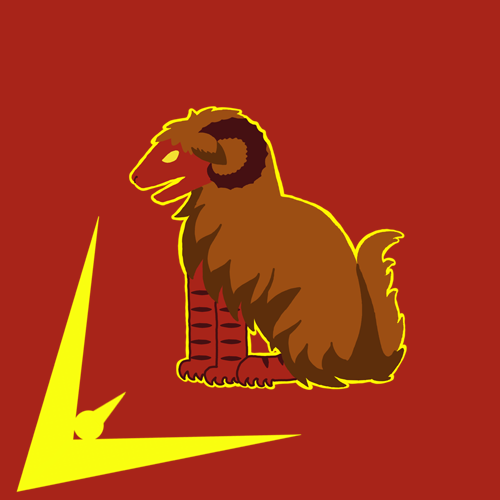
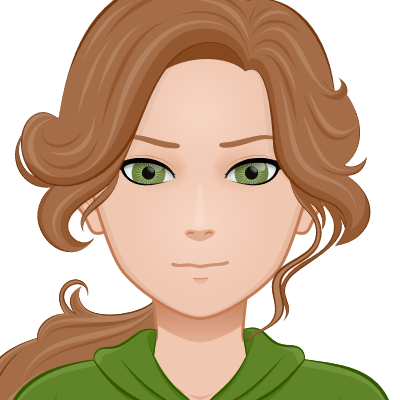
Maybe my favorite trait here is how they are solitary but always ready to aid each other and able to have a good relation with other species (even if the latter is just for convenience).